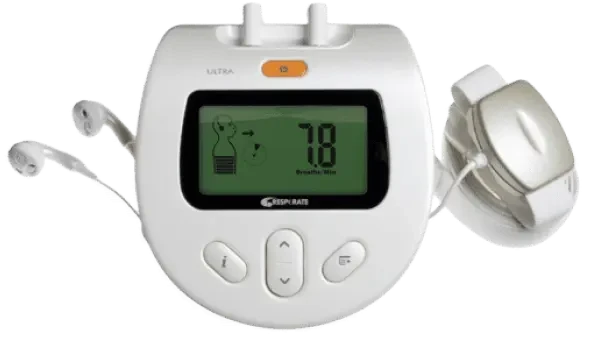High blood pressure is a pervasive health issue affecting millions worldwide, often leading to severe cardiovascular complications if left unmanaged. Traditional exercise routines like aerobic exercises and weightlifting have long been recommended for blood pressure management.
However, isometric workouts, which involve contracting muscles without moving the joints, have emerged as a potentially effective alternative. Could incorporating isometric exercises into your fitness regimen be the key to better managing your blood pressure?
What are Isometric Exercises?
Isometric exercises, the kind where you contract large muscles without actually moving the body part, may help reduce blood pressure in healthy people, a study shows. And something as simple as squeezing your inner thigh muscles together while you sit would qualify.
That’s right. Isometric exercises can be done anytime, anywhere, and they don’t require you to bend or lift. In a handful of studies, folks with normal blood pressure who did three 15 to 20 minutes sessions of isometric exercises every week for 10 weeks experienced more than a 10-point plunge in their systolic blood pressure.
And their diastolic pressure fell almost 7 points. Not bad for not lifting a finger! Simple things like doing a static hand grip, flexing the bottoms muscles, or doing leg squeeze all count. In the research, the three weekly sessions included doing multiple 2-minute rounds of isometric exercises like those, with 1 to 3 minute rests in between.
Are Isometric Exercises to lower blood pressure effective?
In one study a hand grip spring dynamo-meter was used for IHG (Isometric Handgrip) exercise training. A total of 30 normal healthy volunteers in the age group of 20-40 y were enrolled for the study. The exercise training protocol consisted of five 3-min bouts of IHG exercise at 30% of maximum voluntary contraction separated by 5 min rest periods. The exercise was performed 3 times/wk for 10 wks. Subject’s blood pressure was measured before and after exercise.
There was a significant reduction in resting blood pressure following 10 wk of exercise training. Both Systolic and Diastolic blood pressure reduced significantly.
In the mid-1970s, the U.S. Air Force asked Dr. Ronald Wiley, an expert in heart and lung physiology, to find a way to keep fighter pilots from losing consciousness when flying the F-16 fighter. This jet could accelerate so fast that the G-forces it generated made it difficult for the pilot’s heart to pump blood to the brain, causing vision problems, trouble thinking, and blackouts.
One of Wiley’s strategies was a hand grip that pilots could squeeze to boost their blood pressure enough to maintain circulation to the brain. As he worked with pilots, he was struck by a contradiction ” Those who practiced with the hand grip for a few weeks lowered their resting blood pressure.
Types of Isometric Exercise
Plank Bridge
Lie down in the push-up position and place your elbows under your chest. Rest your body on the floor. Now, the entire weight of your body will be concentrated on your forearms. Push up your body and count to 10. Hold this position for 10 seconds and repeat 2 to 3 times. This is one of the simplest forms of isometric exercises, and it can be performed daily.
Isometric Push Up
Get into the pushup position as before and lie down with your arms extended. Lower your body to the halfway position and hold for about 10 seconds or count slowly until 10. This exercise can be repeated for 2 or 3 times, depending on your fitness level. Most isometric exercises are not very tiring, but you must take it slowly if you’re a beginner.
Isometric Bicep Exercise
This is the simplest type of isometric exercise, and it can be easily done at the office. Put your hands under the desk and place them against the tabletop, with your palms up. Now, press against the tabletop, keeping your elbows tight against your ribs. Hold your hands in this position for 10 seconds or count slowly until 10, and then repeat 2 to 3 times.
Isometric Shoulder Raises
For this exercise, you will need a pair of dumbbells. Hold one dumbbell in each hand and stand with your feet shoulder width apart. Raise both arms upwards from the side until they’re parallel to the ground. Hold them in this position for about 10 to 25 seconds, and repeat 2 to 3 times. If you find it difficult to raise both hands at the same time, you can start by raising one hand at a time.
Watch how Julie Lowered her Blood Pressure Naturally.
It was 170/110, this morning it was 120/80
Learn MoreMore Exercises To Try
Ball Squeeze
The ball squeeze exercise requires only a tennis ball or any other small ball. Hold the ball in one hand and squeeze it for 60 to 90 seconds. Place the ball in your other hand and repeat the squeeze for the same amount of time. Repeat the exercise three times with each hand.
Athletic Gripper Hold
Athletic grippers can be found at nearly any sporting good store. Grippers generally come in different resistances so you’ll have to choose one appropriate for you. Ideally, you should use one that you are able to squeeze for two minutes before your muscles fatigue. Hold the athletic gripper in one hand and squeeze it for two minutes then switch hands and repeat the exercise. Complete the exercise twice with each hand.
How Isometric Exercises Help
We have a great video on Athletic Hand Grip:
Practicing isometric exercises offers various benefits to our body and they are:
- Isometric exercises help in strengthening and conditioning muscles.
- They aid in strengthening dormant muscle tissues on isolated muscles.
- They improve one’s control over the body.
- Improve body posture and spine alignment.
- Help in preventing injury.
- These exercises are used in injury rehabilitation.
- Help in the development of lean muscles.
- Improve bone density and make them strong.
- Increase resistance power and endurance ability.
- These exercises activate all the major units in the body.
- These exercises can be done anywhere and anytime.
- Most isometric exercises do not require any equipment, or at most a set of dumbbells is enough.
- Help in graceful aging, keeping body posture straight and erect even in the old age.
- These exercises can also be done by elderly people and are considered good for them.
Isometric workouts present a promising avenue for managing blood pressure, offering a low-impact, accessible form of exercise that can be adapted to various fitness levels. By understanding the benefits and incorporating isometric exercises into your routine, you may take a significant step towards improving your cardiovascular health.
As with any new exercise regimen, it’s essential to consult with a healthcare professional to tailor a program that suits your individual needs. Embracing isometric workouts could be a crucial step in your journey to better blood pressure management and overall well-being.
 Eli Ben-Yehuda
Eli Ben-Yehuda 











Comments
11 Replies to “Can Isometric Workouts Be the Key to Managing Your Blood Pressure?”
I look forward to getting resperate emails. They always contain interesting, helpful and usefull information.
Dear Anthony, Thank you for the input. I try hard to ensure our readers get great information.
Kindest Regards, Eli.
Hi very interesting article. I know the thoughts on many types of exercise do change. As a fitness instructor with some 30 years experience and lecturing in the subject for 20 years I was always informed that isometric exercise had the opposite effect and increased blood pressure and should not be carried out by hypertensive trainers. Be grateful if you could clear this.
Hi Kevin, Even though it can cause a temporary rise in BP, like most exercises, I have not heard it to be detrimental. Although people who have extremely high blood pressure should consult their
physician before doing.
Kevin, this might help: “In some of the early studies, IRT was employed at a relatively high proportion (>50%) of MVC, with some studies asking research subjects to contract at maximal capacity (100% MVC) resulting in an exaggerated pressor response. Contractions 50% MVC, or above, are likely to generate a notable pressor (hypertensive) response > 200/100 mmHg and should be avoided in all but young, healthy people clinically free of cardiovascular disease… but recent trials have used low to moderate training intensities (10%–30% MVC) normally performed for a short 2-min duration; these are associated with, relatively modest rises in BP during IRT. In summary, during both isotonic and isometric muscular contractions there is a notable pressor (BP raising) response at intensities of 50% MVC or above, but this is mitigated by the lower (10%–30% MVC) training intensities and shorter durations that have become common practice” (Baffour-Awuah et al., 2023). Link: https://link.springer.com/article/10.1186/s40885-022-00232-3
Not surprised that isometric grip exercise can reduce pressure readings. I’m a guitar player playing tribute concerts for the late Glen Campbell. The grip routines greatly increase hand dexterity for long concerts while helping to lower BP as well, it’s a “win-win” routine!! Appreciate the article!
I am trying to download your printable Isometric Exercises E-Book shown in this email but the link is not working.
Hi My apologies. It was working when I posted it I will send you in an email. Eli
I always look forward to getting resperate emails. I just did the iso exercises in your article. Thank you for sharing such helpful and interesting information.
Hi Lisa, Your welcome, thank you for the feedback. Kindest Regards, Eli, Content Manager, RESPeRATE.
Thanks for the great article! I started doing the hand grip exercises a week ago. I was wondering though, do you know if there is a limit on how often you should do the exercises? I know they say 3 times a week, but is it possible to do daily?